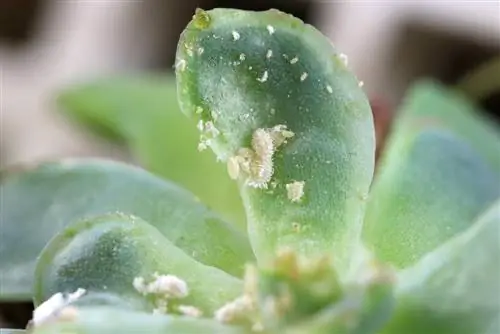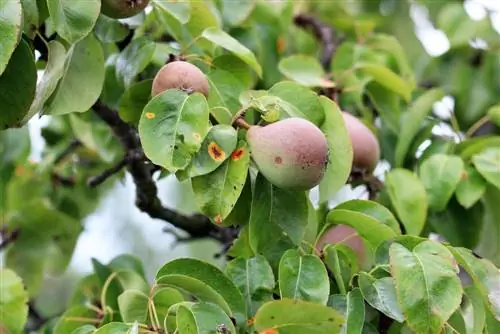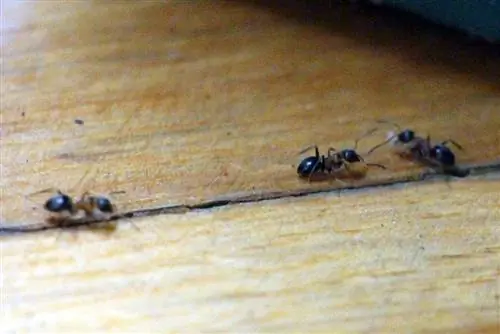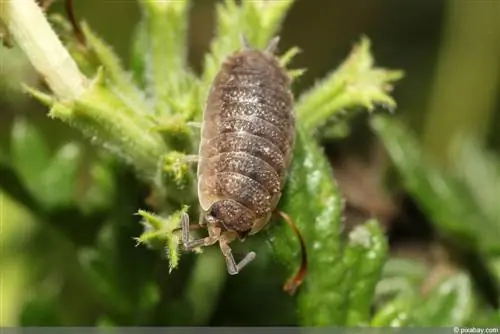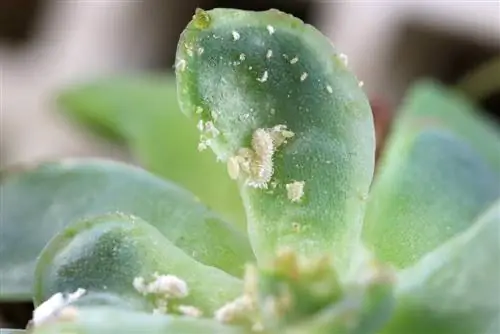- Author admin [email protected].
- Public 2023-12-17 03:39.
- Last modified 2025-01-24 12:45.
Mealybugs are also called mealybugs and have become widespread as pests. These can affect both houseplants and various plants in the garden. Mealybugs often settle in areas of the plants that are difficult to see, meaning an infestation is only discovered late and at an advanced stage. Since the mealybugs can multiply explosively, immediate action is always required.
General information
The pests form their own family within the scale insect family. There are about a thousand different species of mealybugs, but the methods of combating them do not differ much. The mealybugs do not grow larger than a few millimeters and have spread all over the world. The small animals are also able to reproduce unisexually. This is why female species are much more common than male ones, a circumstance that can lead to explosive reproduction. In order to prevent an infestation in advance, choosing the right location is extremely important. Furthermore, an optimal supply of nutrients, light and water is essential so that the spread of mealybugs can be prevented.
- Animals are either brown, pink or white in color
- Females lay up to 600 eggs approximately every two months
- Clutches are often hidden in the substrate, leaf axils or bracts
- Larvae hatch after approx. 10 days
- Pests spread extremely quickly
- Infestation is often initially overlooked
- Protect themselves against external influences with a waxy coating
- Take appropriate countermeasures immediately
- Prefer herbaceous natural and house plants
- Orchids, rubber trees, yuccas and cactus plants are particularly popular
Causes & Damage
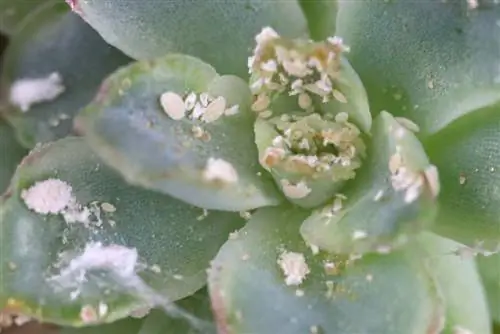
The causes of an infestation include, above all, unfavorable location conditions. If the location is too warm, too dark or the ambient air is too dry, mealybugs feel particularly comfortable. This is why infestations occur particularly often during the winter season, as the mealybugs can spread easily in the dry, warm heating air with little daylight. Another reason for an infestation is fertilizers that contain a lot of nitrogen, which leads to an imbalance in the plants. In addition, mealybugs often come into the house or garden when new plants are purchased. It is therefore necessary to carry out a thorough check in advance for any plants that may already be infected. Mealybugs suck out the host's plant sap and then secrete toxic secretions. This severely weakens the affected plant, causing tissue damage and then the leaves falling off.
- Infestation is shown by white and cotton-like webs
- Pest surrounds itself with this substance
- Mostly settle on shoots, stems and leaves
- Root areas and flowers are also possible for orchids and cacti
- Exude sticky honeydew
- Secreted poison inhibits plant growth
- Leaves turn yellow and dry up
- Sticky and white spots in the planter are also signs of infestation
- Extremely weakens the affected plants
- Frequently transmit various viral diseases
- Particularly severe infestations lead to the death of the plant
Remove
If the infestation was discovered early, the mealybugs can be controlled by stripping them. These must always be removed, even if the infestation is still limited. Stripping can be carried out using various equipment and requires a little patience and sensitivity, as the plant should not suffer as a result. With thin wooden sticks you can also reach extremely narrow cracks in the plant, for example in a cactus. If the infestation has progressed significantly, larger areas of the padded areas must be removed, including the nests and their contents. If there is honeydew on the plant, this must also be removed. Otherwise, harmful fungi can settle in these areas, which severely weaken the plant.
- Use wooden sticks, cellulose cloths and cotton swabs to remove
- Remove the nests and wrap them in tissue paper
- Dispose of directly in household waste
- Use cotton swabs on smooth areas
- Soak with high-percentage alcohol (melissa spirit, etc.)
- Alcohol dissolves the wax-like layer of the pests
- Strip off the mealybugs completely with the web
- Use a toothbrush for larger infestations
- Repeat the procedure regularly
- Wipe honeydew with soap solution
- Dissolve soft soap in water first
Biological control measures
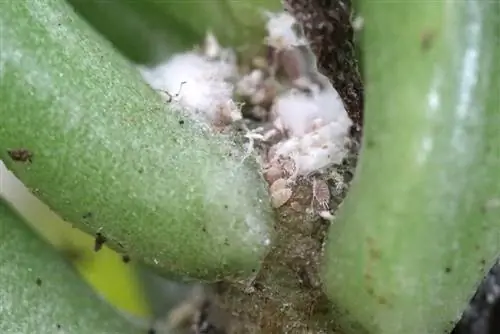
In order to successfully combat mealybugs, the affected plants must be separated from their neighbors to prevent the pest from spreading further. There are a few exceptions to note when using organic products, as not all plants tolerate the products well. However, most of them are well tolerated and extremely effective. Soft-leaved plants in particular react very sensitively to spraying with oil-based products. Mineral oil-based preparations can cause burns to the plants, so their compatibility should be tested first. Carry out a test measure in advance on an individual leaf or shoot and check the reaction. Sprays that you produce yourself are not only cheaper, but also better for the environment and human he alth, compared to chemical products from specialist retailers.
- Change to a cool and bright location
- If individual shoots are infested, remove them completely
- Set up humidifier
- Shower with a strong jet of water
- Spray with biological solutions
- Use non-containing products
- Use soap solutions
- Paraffin and lamp oil are also suitable
- Products containing rapeseed oil for sensitive plants
- Fill solution into spray bottle
- Spray affected plants twice a day
- Don’t forget the underside of the leaves
- Keep doing this until lice have completely disappeared
Repotting
The mealybugs are often removed from the surface of the plants and there is a noticeable improvement. However, if they stay in the root area and lay eggs there, the infestation reappears. In order to completely free the roots of lice and eggs, repotting is absolutely necessary in the event of an infestation. Neither lice nor eggs should get stuck in the roots, otherwise the infestation will quickly repeat itself.
- Remove old soil completely from the roots
- Rinse rootstocks thoroughly with cold water
- Remove old plant substrate in household waste
- Only use completely new soil for repotting
- Repot the plant carefully
- Always be careful when repotting
- Avoid nitrogen-based fertilizers in the future
Tip:
To make sure that no germs, insect clutches or viruses are already present in the new planting substrate, the fresh soil can be disinfected in the oven at 200 degrees for about 20 minutes before repotting.
Predators
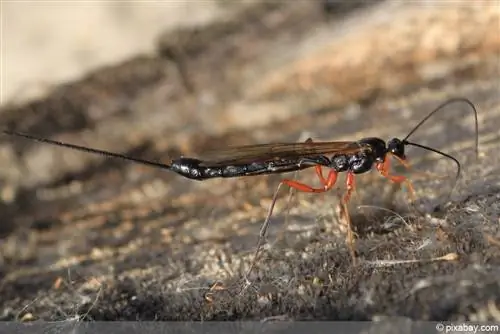
If you are afraid of using chemical preparations and want to take long-term action against the pests, you are well advised to use the mealybugs' natural predators. These prevent the further, invasive spread of the pests in a harmless way. Due to the efficiency of the predators in the fight against mealybugs, they are available both in specialist shops and over the Internet. The use is not only intended for the garden, but also for living spaces. It is no problem to use the predators to combat mealybugs in the home. If the animals cannot find any more food on the affected plants, they will leave the living spaces of their own accord.
- Beneficial insects destroy the pests
- Lacewing, requires temperatures of at least 24° C
- Australian ladybird, needs temperature values of at least 20° C
- Parasitic wasp, tolerates temperatures of 10-30° C
Chemical control measures
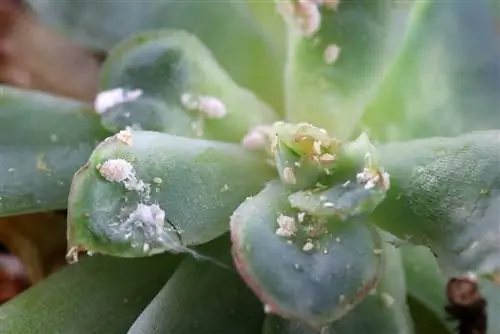
If biological control agents have not been successful, the last resort is treatment with a chemical insecticide. With this, even very severely infested plants can possibly be saved. However, when using chemical agents, their toxicity for humans and animals must be taken into account. Small children, curious pets and older people in particular can suffer from severe symptoms of poisoning after coming into contact with the product. Many of the chemical insecticides need to be reapplied at certain intervals because they do not kill the mealybug eggs. Repeated use of the treatment also allows the subsequent generations of pests to be controlled. Since the spraying products also contain oils, compatibility must be checked in advance.
- Insecticides are effective in extremely severe infestations
- Pay attention to plant-compatible products
- Systemic insecticides are user-friendly
- Strictly follow application instructions
- Immediate use possible
- Available in the form of sprays, sticks, sticks and as granules
- Effective products are: dimethoate, imidacloprid and thiacloprid
- When spraying, ensure a minimum protective distance from the body
- Spray the undersides of the leaves too
- Repeat measures for a sufficiently long time

